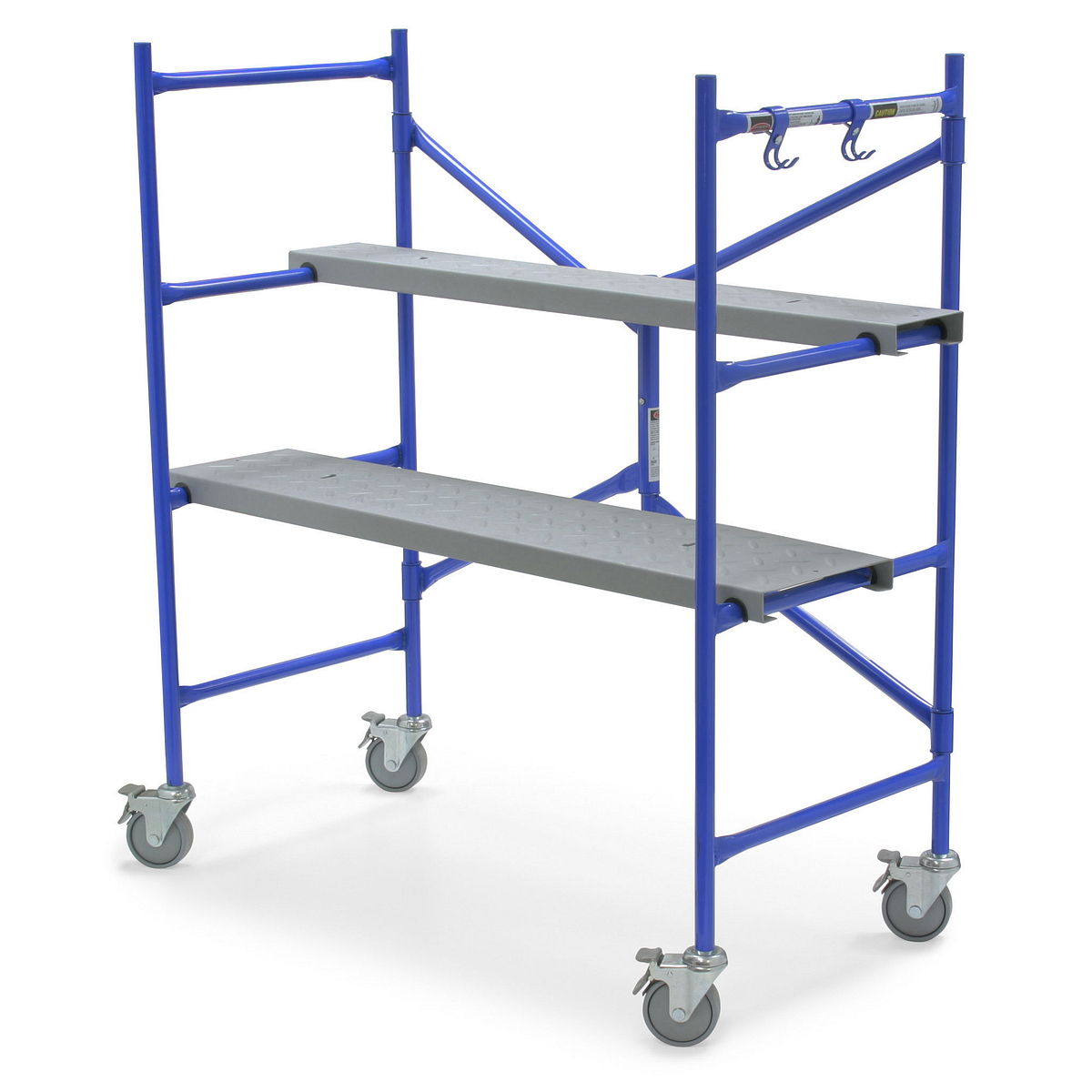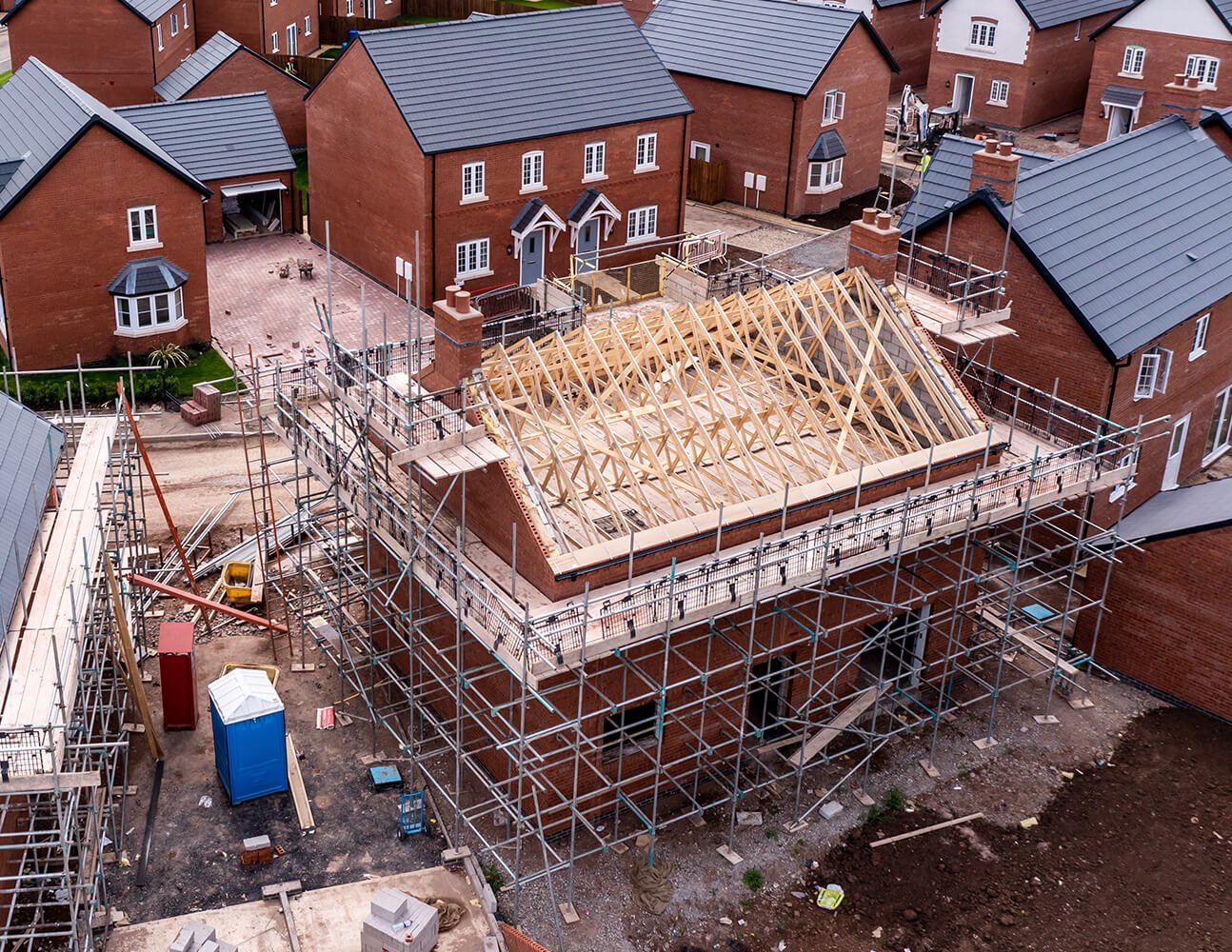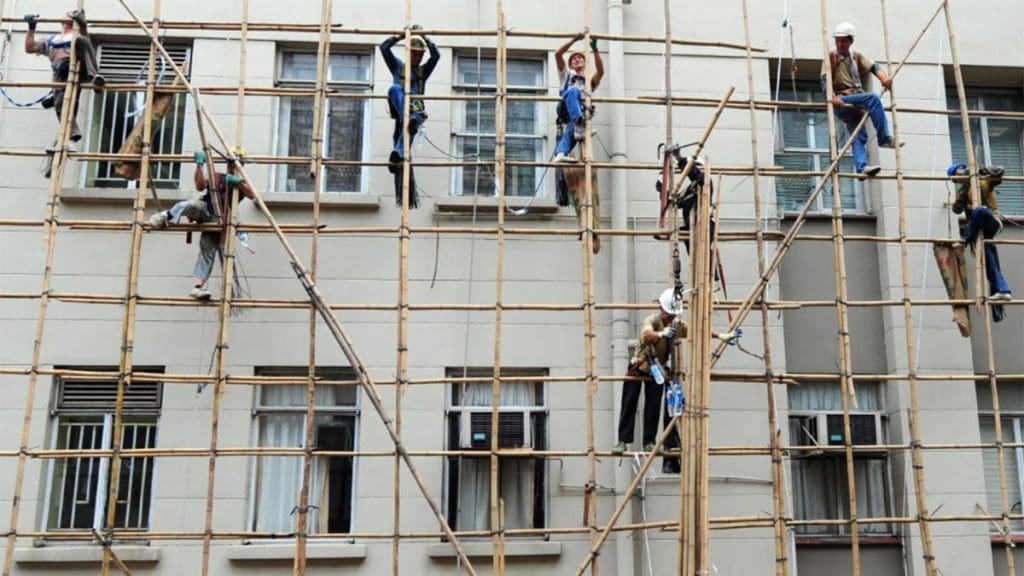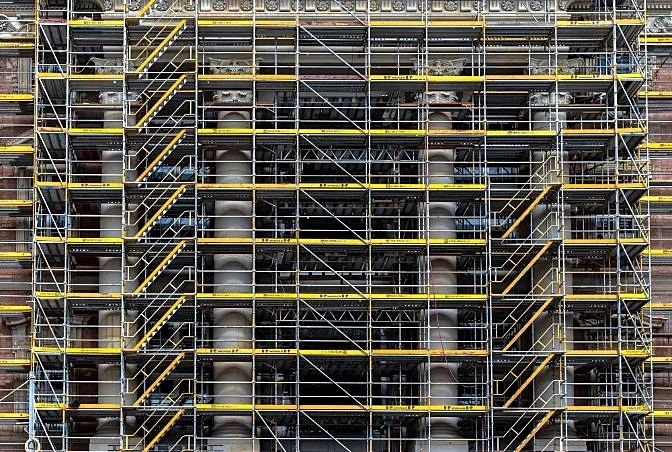Temporary Roof Scaffolding Experts Providing Secure and Reliable Installations
Temporary Roof Scaffolding Experts Providing Secure and Reliable Installations
Blog Article
Exploring the Various Sorts Of Scaffolding Made Use Of in Building And Construction Jobs
The building and construction market relies greatly on different kinds of scaffolding to satisfy specific job requirements, each offering distinctive advantages and applications. Traditional structure scaffolding offers a tough foundation for basic tasks, while put on hold scaffolding is important for job on high-rise frameworks.

Standard Structure Scaffolding
Typical structure scaffolding is one of the most widely used methods in the building market because of its toughness and adaptability. This system includes upright and straight frames that are put together to create a stable platform for products and workers. The main parts consist of upright articles, horizontal ledgers, and angled braces, which together provide a strong framework that can sustain significant loads.
One of the key benefits of traditional frame scaffolding is its adaptability to numerous construction tasks, ranging from residential structures to huge industrial frameworks. The modular design permits for easy setting up and disassembly, making it efficient for both long-lasting and temporary projects. Furthermore, the system can be customized in height and size, accommodating different structure designs and website problems.
Security is critical in scaffolding applications, and typical structure systems are equipped with guardrails and toe boards to stop drops and make sure worker defense. Moreover, regular assessments and adherence to safety laws are vital in maintaining the stability of the scaffold. Overall, conventional frame scaffolding remains a fundamental choice in the building market, supplying a dependable platform for labor and improving general job performance

Suspended Scaffolding
Put on hold scaffolding provides a distinct solution for building and construction tasks that need access to raised surfaces, particularly in scenarios where standard framework scaffolding may be not practical. This kind of scaffolding is normally suspended from the roof or top levels of a framework, using a system of systems, ropes, and pulley-blocks to create a functioning space that can be readjusted to various elevations.
One of the key advantages of put on hold scaffolding is its flexibility. It can be conveniently repositioned or decreased to accommodate adjustments in construction demands, making it optimal for jobs such as home window installment, frontage job, and maintenance on skyscraper buildings. In addition, the marginal footprint of put on hold scaffolding permits much better usage of ground space in city environments, where area is usually restricted.
Security is a critical factor to consider in the usage of put on hold scaffolding. Overall, suspended scaffolding supplies a efficient and reliable solution for accessing hard-to-reach areas in different construction situations, improving both performance and safety and security on website.
System Scaffolding
System scaffolding, typically related to as a contemporary option in the scaffolding market, contains pre-engineered elements that can be rapidly put together and adapted for numerous building and construction tasks. Scaffolding. This kind of scaffolding is defined by its modular style, which enables versatility and effectiveness on job sites, suiting structural requirements and various elevations
Commonly made from high-strength steel or light weight aluminum, system scaffolding uses improved sturdiness and stability. The parts consist of vertical posts, straight journals, and diagonal dental braces, which interconnect safely, guaranteeing a durable framework. The design usually integrates standardized installations, simplifying setting up and disassembly processes, consequently decreasing labor time and prices.

Rolling Scaffolding
Moving scaffolding is a functional choice to typical fixed scaffolding, designed for movement and ease of use on construction websites. This sort of read this article scaffolding contains a system supported by frames with wheels, allowing workers to quickly move it as needed. The movement feature considerably improves efficiency, as it reduces downtime related to putting together and disassembling fixed scaffolding.
Usually built from lightweight materials such as light weight aluminum or steel, rolling scaffolding provides a sturdy yet mobile solution for tasks needing constant repositioning - Scaffolding. It is especially beneficial in jobs such as paint, drywall setup, and electrical work, where accessibility to various heights and areas is needed
Safety is paramount in rolling scaffolding layout, with attributes such as locking wheels to avoid unplanned motion when being used, and guardrails to protect employees from falls. In addition, lots of designs are flexible in height, accommodating numerous task requirements.
Cantilever Scaffolding

The layout of cantilever scaffolding commonly entails using arms or brackets anchored to a structure or framework, making it possible for the platform to extend outside securely. Security is critical; thus, these click for source scaffolds need to check my source be crafted to hold up against ecological conditions and various lots. Normal evaluation and maintenance are important to ensure architectural honesty and worker safety.
Cantilever scaffolding is preferred for its convenience and effective use of area, making it a preferred option in metropolitan settings where area constraints are common. In addition, it assists in much easier access to high altitudes, eventually adding to the general effectiveness of construction jobs. Just like all scaffolding kinds, appropriate training and adherence to safety and security criteria are vital for employees using cantilever scaffolding.
Conclusion
Traditional framework scaffolding supplies security, while put on hold scaffolding supplies convenience for elevated tasks. System scaffolding helps with quick assembly, and rolling scaffolding enhances movement for varying work atmospheres.
Traditional framework scaffolding gives a tough structure for basic jobs, while suspended scaffolding is vital for work on high-rise structures.Moving scaffolding is a versatile alternative to typical set scaffolding, made for mobility and convenience of usage on building and construction sites. As with all scaffolding types, correct training and adherence to safety requirements are important for employees using cantilever scaffolding.
Conventional structure scaffolding supplies security, while put on hold scaffolding provides adaptability for elevated tasks. System scaffolding promotes quick setting up, and rolling scaffolding enhances movement for differing job settings.
Report this page